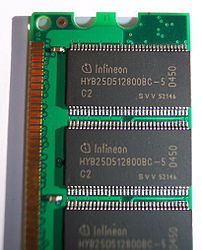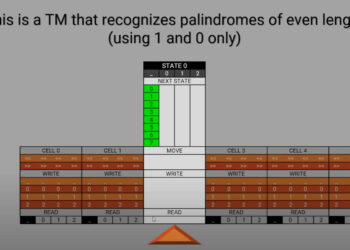 Image via Wikipedia
Image via WikipediaIn the April 11th issue of Science, an article detailing the development of “racetrack memory” in computing devices [paid content] introduces the intriguing possibility that a new paradigm of physical memory could create tiny devices capable of storing hundreds of movies, thousands of songs, run on batteries for weeks, and be cheaper and faster to build.
The concept of racetrack memory derives its name from the notion that instead of fixed polarized capacitors likes those in flash memory, racetrack memory uses nanowires divided into domains that move along sequentially like a conveyor belt. When a new memory unit is needed, the nanowire receives the signal, and pushes the domain wall of the prior domain down, advancing storage along the racetrack, in a manner akin to an assembly line. Digital meaning is derived from domain differences.
While the technology is years from reality, it is still worth noting. IBM is at the center of the research, and with commercially viable potential like this, I’m betting a lot of resources will be thrown at solving the technical and manufacturing puzzles that remain.
Just when you thought a 1GB thumb drive was impressive, think of your entire computer running off something the same size. Moore’s Law continues to prove itself.
Discussion
1 Thought on "Racetrack Memory: The Future of Storage?"



